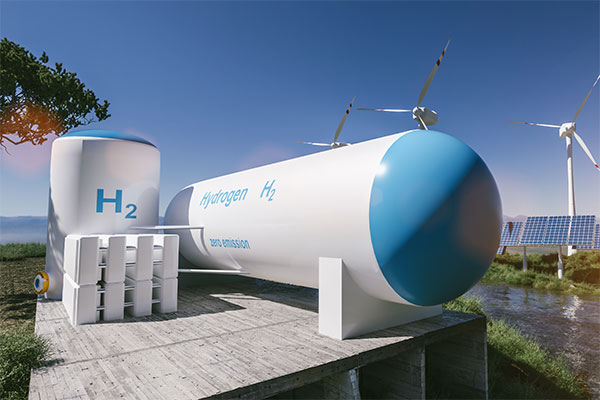Hydrogen is an incredibly versatile energy carrier that’s utilized by a variety of sectors, thanks to its diverse range of industrial and commercial applications.
The two most significant contemporary uses for hydrogen include fossil fuel processing, whereby hydrogen is added to diesel fuels to reduce sulphur and other externalities, and ammonia production, which is used in nitrate fertilizers. In addition, metallurgy, chemical processing, textiles, and fibre and glass manufacturing are some of the other prime uses.
The vast majority of hydrogen used today is derived from fossil-fuel-based sources, specifically natural gas, then there’s Green Hydrogen
Green Hydrogen, which is developed through a process called electrolysis and produces zero emissions, is witnessing tremendous growth. This clean energy source is expected to play a critical role in decarbonizing hard-to-electrify sectors, such as heavy manufacturing, long-distance trucking, and aviation sectors.
Governments worldwide clearly recognize the potential behind hydrogen—as there are more than 50 targets, mandates, and policy incentives in place today that directly support the development of hydrogen technologies. The bulk of policy support has gone towards innovation in hydrogen passenger cars, trucks, buses, vehicle refuelling stations, electrolyzers (used in the electrolysis process), and industrial processing.
As of 2020, the global Green Hydrogen market is estimated at $1.01 billion and is projected to grow at a compound annual growth rate of 15.7% until 2028.
Supplying hydrogen has become a lucrative and promising business, with the demand for hydrogen growing more than threefold since 1975, up to nearly 75 Mt as of 2018.
The hydrogen sector is currently most robust in Europe, accounting for more than 50% of announced projects, though the North American and Asian-Pacific markets are quickly gaining momentum too. China, in particular, is emerging as a hydrogen powerhouse, with a goal of having 10% of domestic energy come from hydrogen by 2050. A total of 53 large-scale projects have been announced in China to date.
According to the latest information from the Hydrogen Council in collaboration with McKinsey & Company, more than 130 large-scale hydrogen projects have been announced worldwide since February 2021, representing a marked increase from the year prior.
The Hydrogen Council estimates that by 2050, hydrogen fuel sources will represent close to 20% of energy delivered to end-users — saving more than six gigatonnes of carbon annually and producing millions of jobs in the process.
Globally, there are now a total of 359 hydrogen projects in the works with investment along the value chain coming to an estimated $500 billion through 2030, of which 30% is mature.
90 countries, comprising 80% of the world’s GDP, now have commitments to meet net-zero emissions in the coming decades, and more than 30 countries have hydrogen-growth strategies in place to meet this goal.
Favourable government commitments to fostering hydrogen innovation, concerns over climate change and greenhouse gas emissions, and falling renewable energy costs are expected to continue to drive the demand for hydrogen, specifically Green Hydrogen, forward.
Favourable government policy commitments to meet net-zero emissions in the coming decades, and increasing use of renewables will necessitate and boost need for Green Hydrogen














Comments